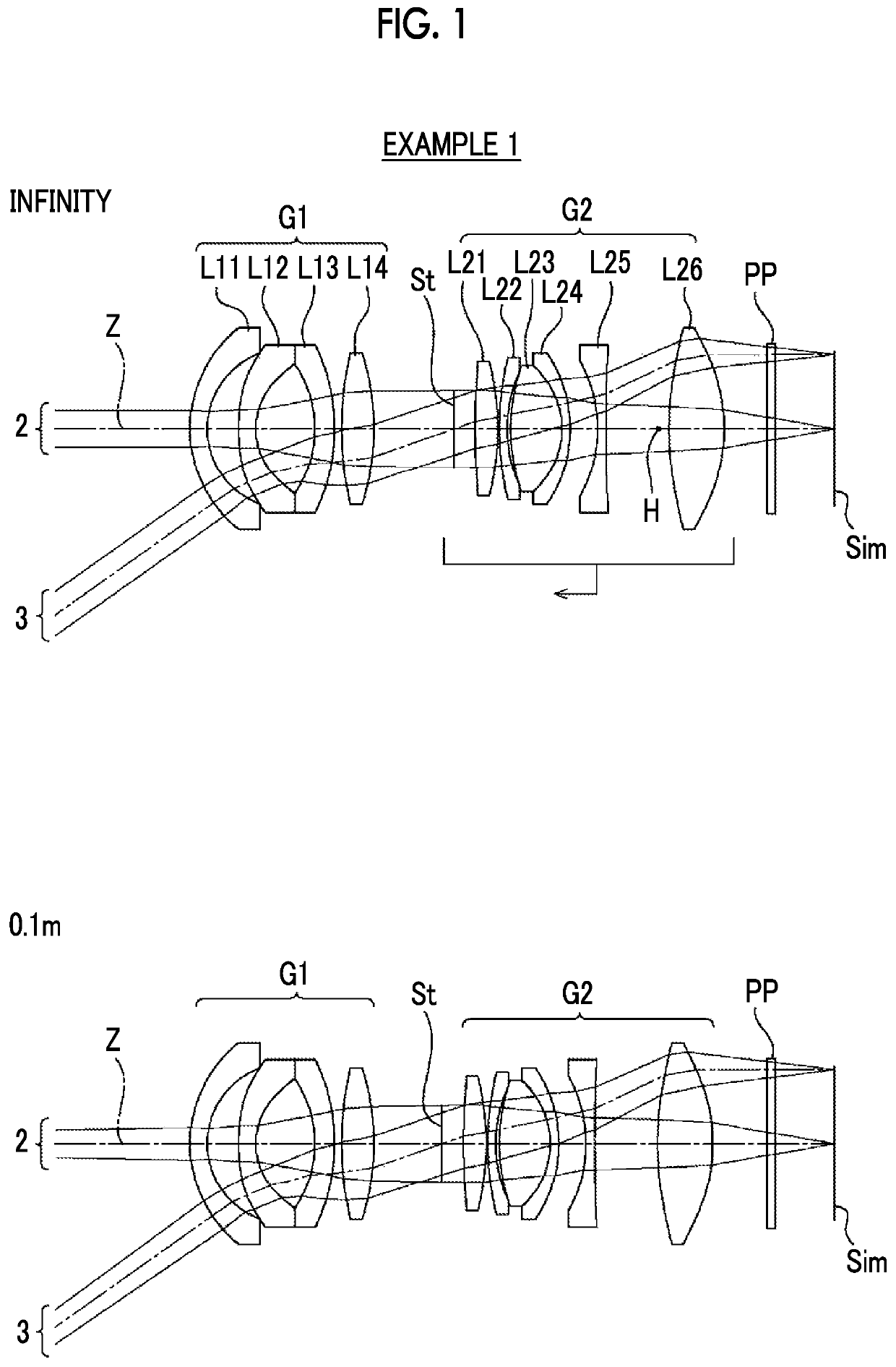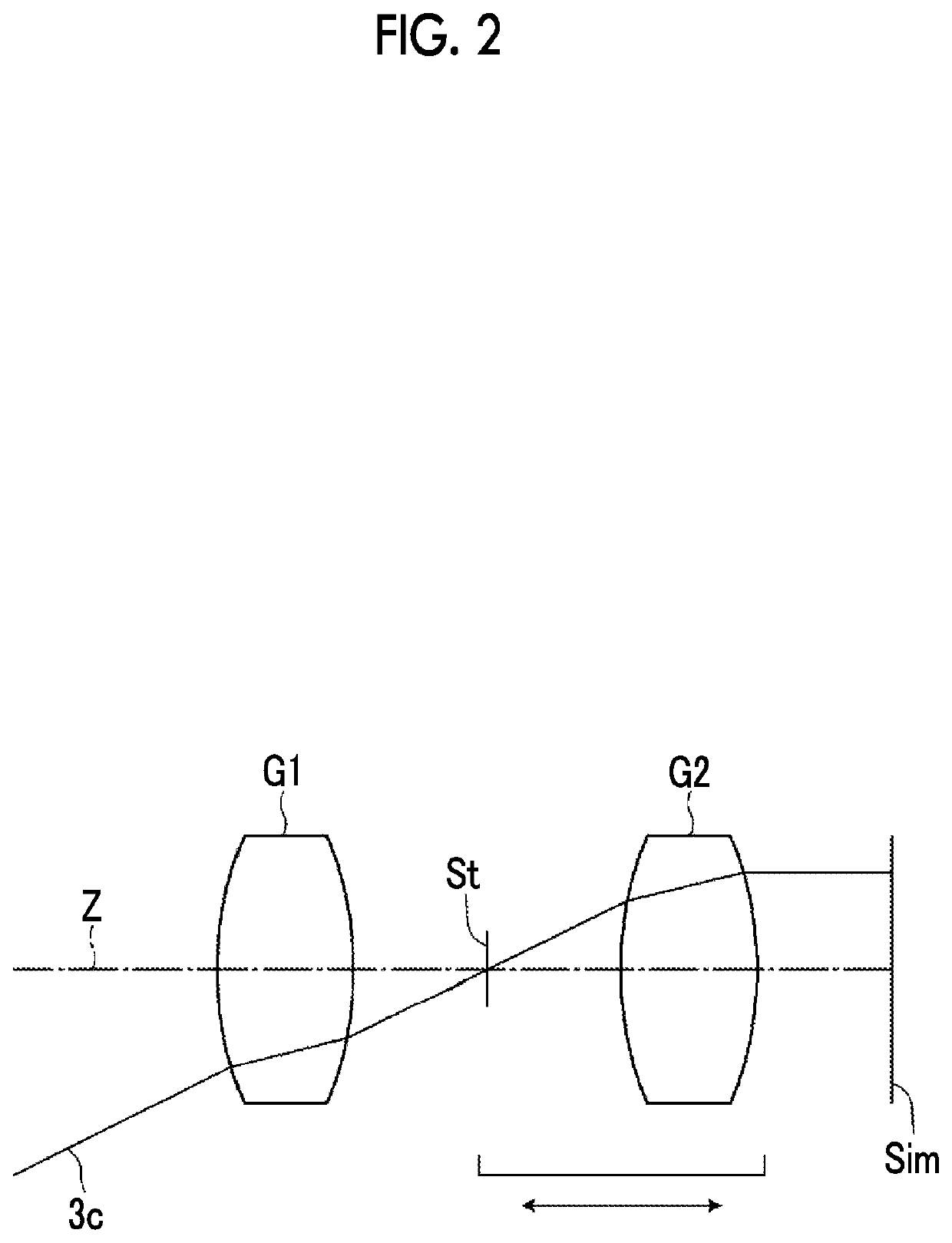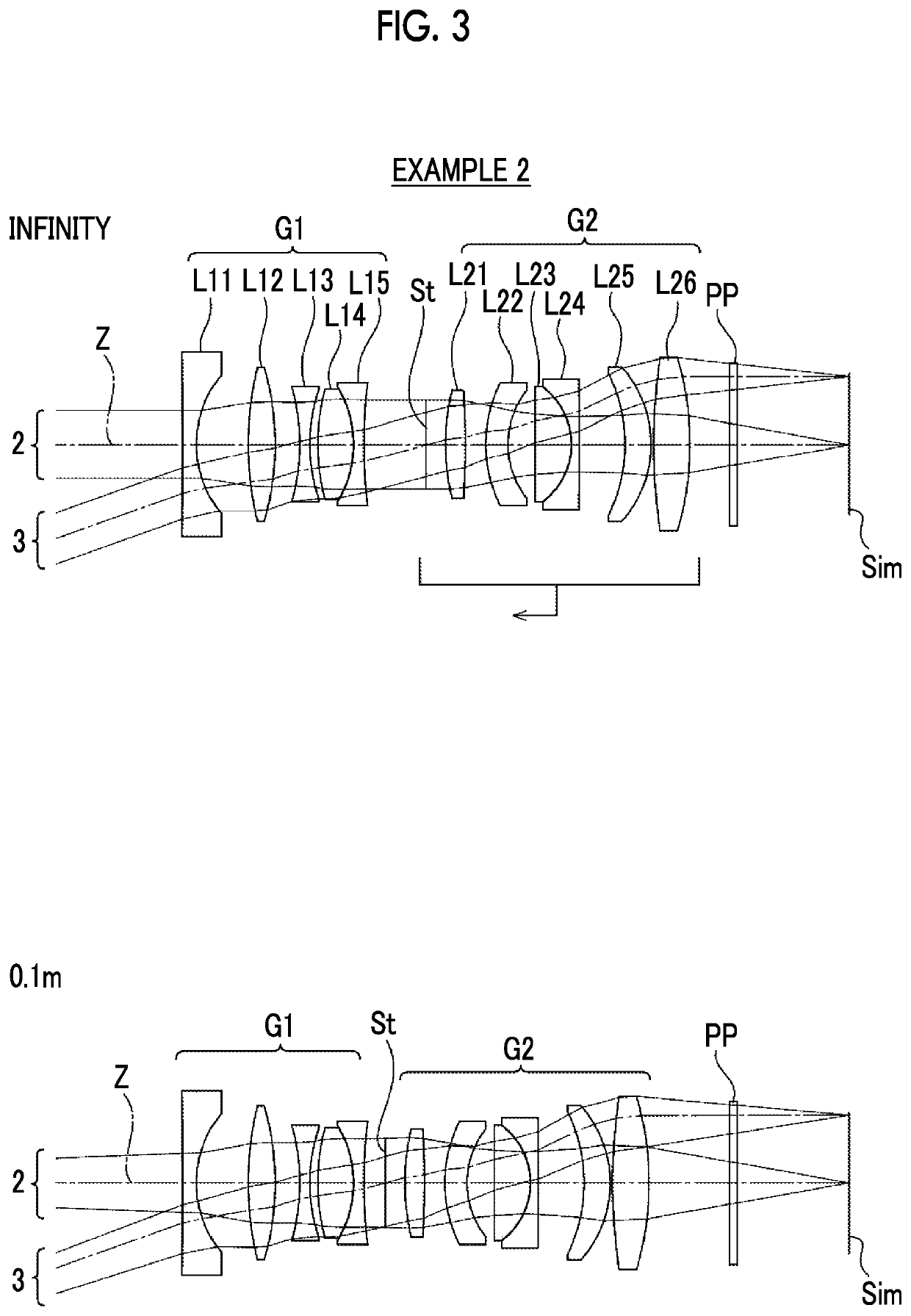Imaging lens and imaging apparatus
a technology of imaging apparatus and lens, applied in the direction of optics, instruments, optical elements, etc., can solve the problem of product outer diameter, and achieve the effect of small fluctuation of angle of view and favorable performan
- Summary
- Abstract
- Description
- Claims
- Application Information
AI Technical Summary
Benefits of technology
Problems solved by technology
Method used
Image
Examples
example 1
[0073]FIG. 1 shows a cross-sectional view of an imaging lens of Example 1, and an illustration method thereof is as described above. Therefore, repeated description is partially omitted herein. The imaging lens of Example 1 consists of, in order from the object side to the image side, a first lens group G1 having a negative refractive power, an aperture stop St, and a second lens group G2 having a positive refractive power. The first lens group G1 remains stationary with respect to the image plane Sim during focusing from a distant object to a close-range object, and the aperture stop St and the second lens group G2 integrally move toward the object side. The first lens group G1 consists of four lenses L11 to L14 in order from the object side to the image side, and the second lens group G2 consists of six lenses L21 to L26 in order from the object side to the image side.
[0074]Table 1 shows basic lens data of the imaging lens of Example 1, Table 2 shows specification and variable sur...
example 2
[0089]FIG. 3 is a cross-sectional view of an imaging lens of Example 2. The imaging lens of Example 2 consists of, in order from the object side to the image side, a first lens group G1 having a negative refractive power, an aperture stop St, and a second lens group G2 having a positive refractive power. The first lens group G1 remains stationary with respect to the image plane Sim during focusing from a distant object to a close-range object, and the aperture stop St and the second lens group G2 integrally move toward the object side. The first lens group G1 consists of five lenses L11 to L15 in order from the object side to the image side, and the second lens group G2 consists of six lenses L21 to L26 in order from the object side to the image side. Table 4 shows basic lens data of the imaging lens of Example 2, Table 5 shows specification and variable surface distances, Table 6 shows aspheric surface coefficients, and FIG. 8 shows aberration diagrams.
[0090]
TABLE 4Example 2Surface...
example 3
[0093]FIG. 4 is a cross-sectional view of an imaging lens of Example 3. The imaging lens of Example 3 consists of, in order from the object side to the image side, a first lens group G1 having a positive refractive power, an aperture stop St, and a second lens group G2 having a positive refractive power. The first lens group G1 remains stationary with respect to the image plane Sim during focusing from a distant object to a close-range object, and the aperture stop St and the second lens group G2 integrally move toward the object side. The first lens group G1 consists of seven lenses L11 to L17 in order from the object side to the image side, and the second lens group G2 consists of six lenses L21 to L26 in order from the object side to the image side. Table 7 shows basic lens data of the imaging lens of Example 3, Table 8 shows specification and variable surface distances, Table 9 shows aspheric surface coefficients, and FIG. 9 shows aberration diagrams.
[0094]
TABLE 7Example 3Surfac...
PUM
 Login to View More
Login to View More Abstract
Description
Claims
Application Information
 Login to View More
Login to View More - R&D
- Intellectual Property
- Life Sciences
- Materials
- Tech Scout
- Unparalleled Data Quality
- Higher Quality Content
- 60% Fewer Hallucinations
Browse by: Latest US Patents, China's latest patents, Technical Efficacy Thesaurus, Application Domain, Technology Topic, Popular Technical Reports.
© 2025 PatSnap. All rights reserved.Legal|Privacy policy|Modern Slavery Act Transparency Statement|Sitemap|About US| Contact US: help@patsnap.com



